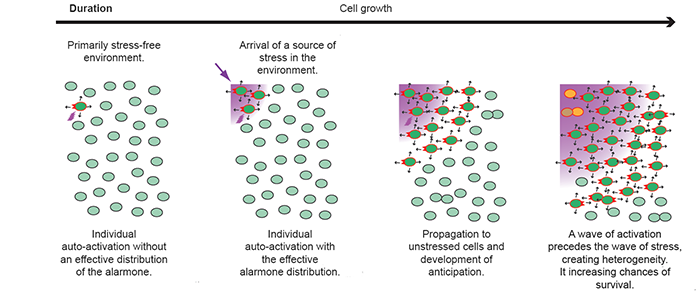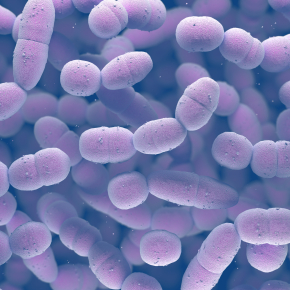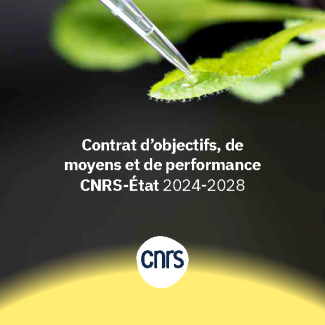
Discovery of a new defence mechanism in bacteria
When confronted with an antibiotic, toxic substance, or other source of considerable stress, bacteria are able to activate a defence mechanism using cell-to-cell communication to ‘warn’ unaffected bacteria, which can then anticipate, shield themselves and spread the warning signal. This mechanism1 has just been described for the first time by a team of scientists2 from CNRS and Université de Toulouse III – Paul Sabatier. It paves the way for the development of new, more effective antibiotic treatments that can target this bacterial communication system.
When they perceive a source of stress, bacteria spring into action, inducing changes in the expression of certain genes and their physiological properties to make them less vulnerable to the detected lethal substance. They also produce small ‘alarmone’ proteins3 on their surface in order to contact and activate random neighbouring bacteria. Unstressed bacteria can only change state in the presence of a sufficient amount of alarmones. Thus, only a source of stress perceived by sufficient bacteria can trigger propagation of this activation4 .
The mechanism offers several advantages: it limits the unnecessary use of energy and enables a rapid and coordinated response in the population. Because activation is gradual, it creates diversity in the population over time, thus increasing the bacteria’s chances of survival.
These findings, published on 10 July in Nature Communications, were established using a dozen different families of antibiotics on populations of Streptococcus pneumoniae, the bacteria that causes pneumococcal infections.

A (light green) bacterial cell detects a source of stress and is activated (dark green). It adorns itself with alarmones (depicted as red triangles) and can transmit them via cell-to-cell contact with neighbouring cells (black arrows). When the source of stress arrives, the percentage of activated cells increases and converts unstressed neighbouring cells, triggering the mechanism.
© Marc Prudhomme
- 1Known as Self Induction and Propagation (SI&P)
- 2Working at the Laboratoire de microbiologie et génétique moléculaires - Centre de biologie intégrative (CNRS/ Université Toulouse III-Paul Sabatier)
- 3Also known as Competence Stimulating Peptide (CSP)
- 4This prevents the mechanism from being triggered when the source of stress only affects a single bacterial cell. Activation due to an internal source of stress that is unique to a cell, for example, does not trigger the mechanism.
Pneumococcal competence is a populational health sensor driving multilevel heterogeneity in response to antibiotics. Marc Prudhomme, Calum H. G. Johnston, Anne-Lise Soulet, Anne Boyeldieu, David De Lemos, Nathalie Campo and Patrice Polard. Nature communications, 10 July 2024.
DOI : https://doi.org/10.1038/s41467-024-49853-2


